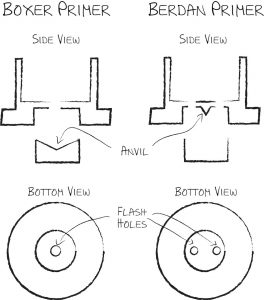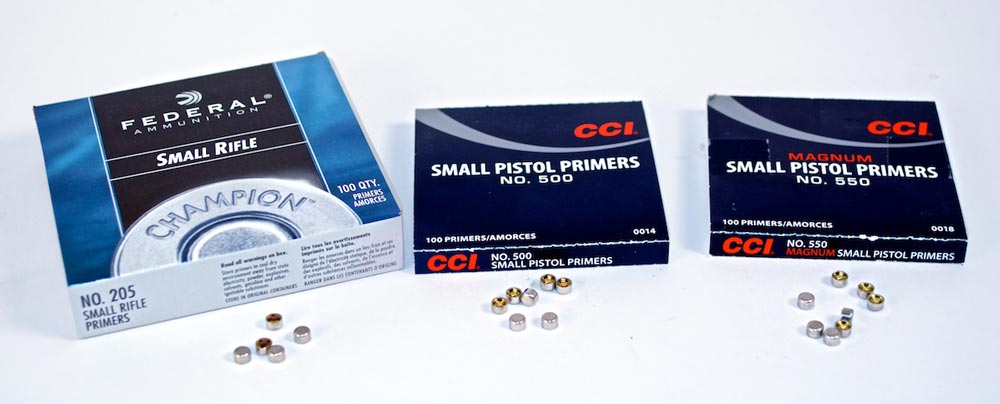
Choosing the right primer for the job is a bigger deal than you might expect.
We don’t give primers a lot of attention, but they have the most important job in the cartridge “go bang” process. It’s the primer that converts mechanical energy into a small conflagration that ignites the powder charge in the cartridge.
A primer contains a primary explosive, which basically means that it’s unstable and volatile. Propellants are generally considered secondary explosives. They’re more stable and burn with a slower velocity. You wouldn’t want to load a cartridge with a primary explosive as the firing pin strike would simply blow up your gun, and that gets expensive. So, a cartridge uses a tiny bit of primary explosive in the primer that’s volatile enough to ignite from a firing pin strike. This small bit of primary explosive sets off the much larger, and more stable, secondary explosive.
Because any variance in this initial “explosion” can cause a much bigger variance in the secondary charge ignition, it’s important to use the exact primer type called for in published load recipes. Think of it like lighting a birthday cake candle. If you light a candle with a Zippo, you’ll likely ignite the candle without an undue amount of melted wax. If you light the same candle with a flamethrower, it’ll also light the candle, but the overall results will be dramatically different.
With that said, let’s get into the primer universe in a little more detail.
Types of Primers
There are two basic types of modern centerfire primers: Boxer and Berdan. Ammunition made in the U.S. generally uses Boxer primers. Boxer primer cups have a small bit of primary explosive material inside the base. Directly above that is an internal anvil. When the firing pin hits the base of the primer cup, the unstable stuff is driven into the anvil portion of the primer, thereby igniting the primer compound. A flame shoots through the flash hole of the cartridge case and ignites the propellant charge.

Boxer vs. Berdan primers.
Berdan primers rely on an anvil that’s built into the primer cup area of the cartridge case itself. For lack of a better word, you’ll see a little “nub” that protrudes into the primer pocket area of the case. Since the nub is in the middle, the flash holes have to be elsewhere. For that reason, Berdan cases have two flash holes on either side of the anvil. The primer itself has no internal anvil, so the compound is pushed against the anvil part of the case to cause ignition.
Both types are technically reloadable, but Berdan is a royal pain in the butt. Fortunately, most (really all) of what most reloaders deal with is Boxer cases and primers. Those are easy to remove from fired cases. As the flash hole is in the center, a pin in the resizing die simply pushes the spent primer out the bottom of the case. Easy peasy.
Primer Sizes
There are four sizes of primers for common centerfire cartridges: small pistol, large pistol, small rifle, and large rifle.
Small rifle and small pistol primers appear identical on the outside, but don’t use them interchangeably. Both are about .175 inches in diameter, and .120 inches tall, give or take a hair depending on brand.
Large rifle primers measure about .128 inches tall and .212 inches wide, again give or take a bit. Large pistol primers are a touch smaller at .120 inches tall and .211 inches diameter on average.
Magnum Primers
Within each primer size family, you’ll also find standard and magnum varieties. We’ll get into this more in a minute, but don’t simply assume magnum primers are for cartridges with “magnum” in the description. As the name implies, they are designed to ignite with more enthusiasm. Normally, they’re used in loads where the combination of powder type, powder charge volume, and case size create conditions where it’s harder for a standard primer to properly and consistently ignite the propellant charge, whether or not it’s a “magnum” cartridge.









Leave A Comment